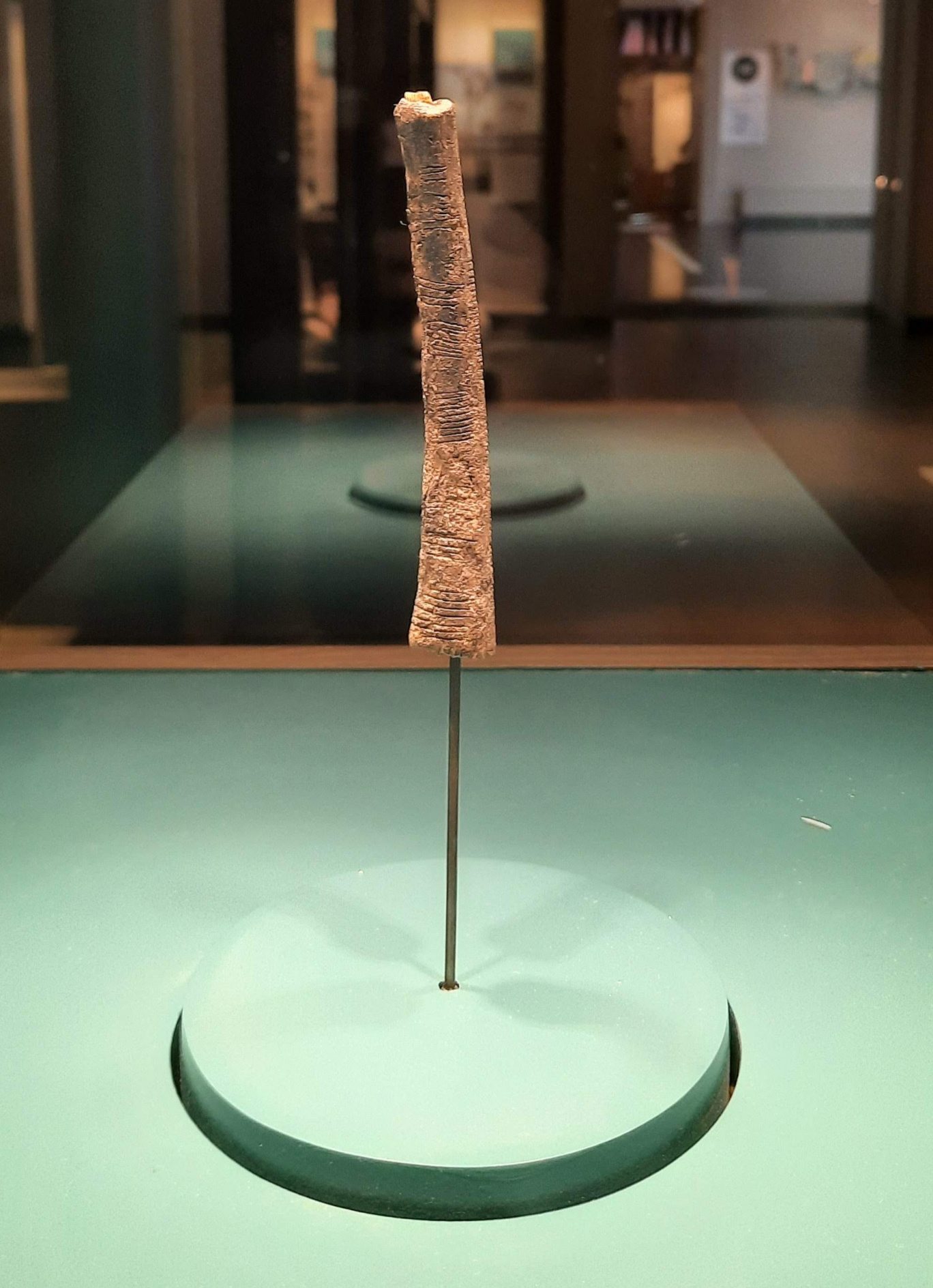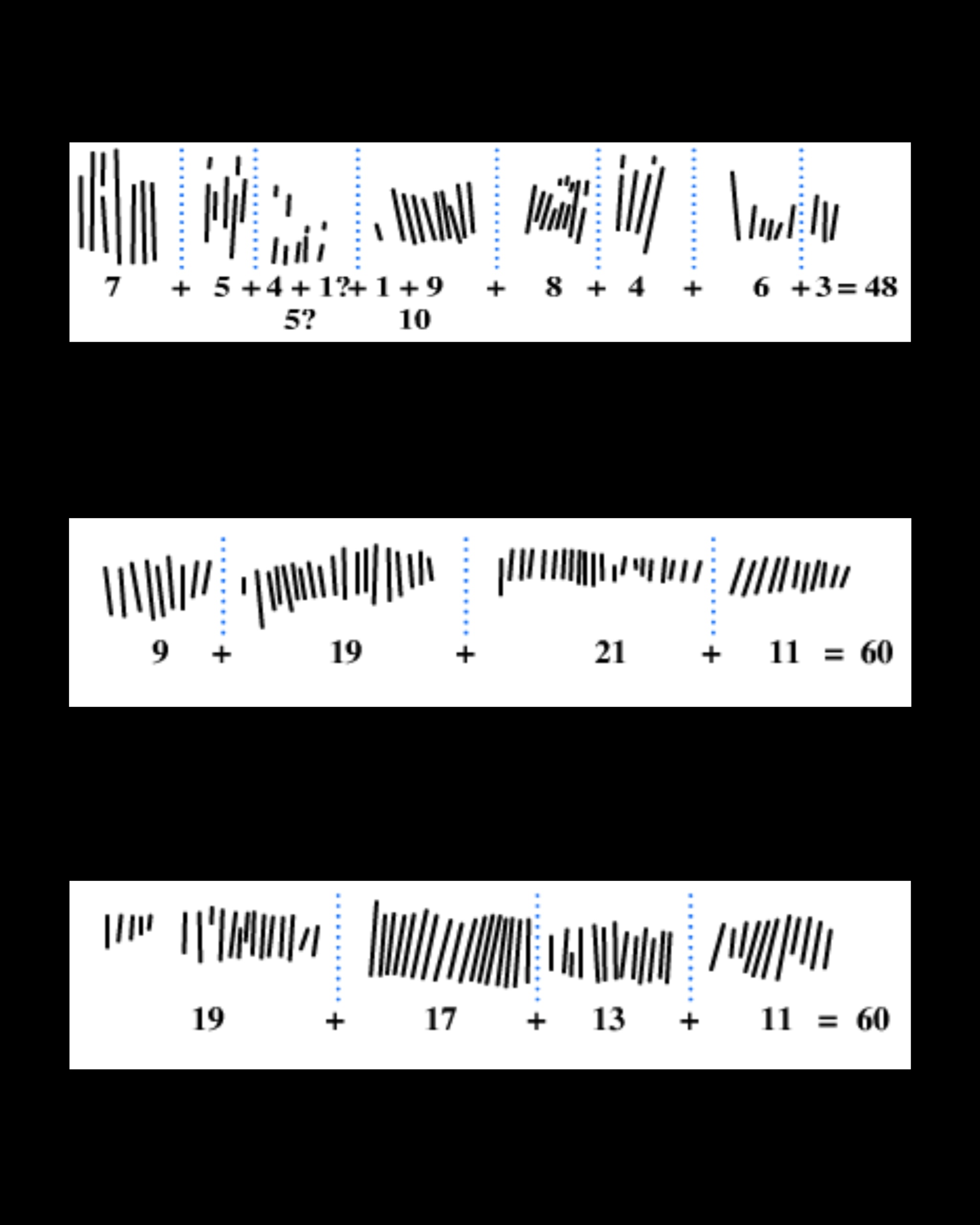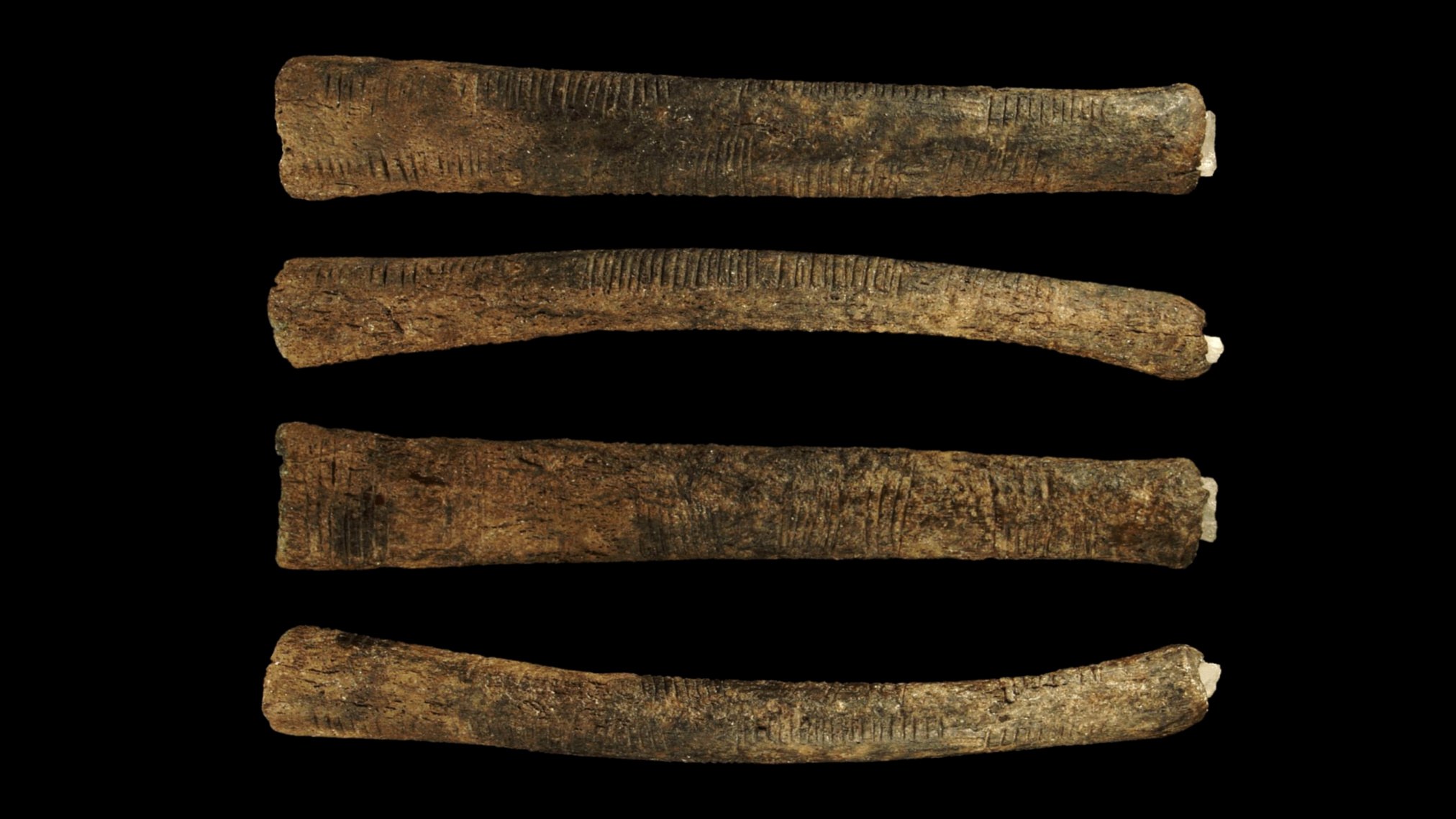In the Democratic Republic of Congo, an enigmatic ancient artifact was discovered that has puzzled historians and mathematicians for decades. The Ishango bone, discovered at the “Fisherman Settlement” of Ishango, is a bone tool and possible mathematical device that dates back to the Upper Paleolithic era.

This dark brown, curved bone, approximately 10 centimeters in length, features a sharp piece of quartz affixed to one end, possibly for engraving.
The engravings on the Ishango bone have led to various theories about their meaning. Some believe they may have mathematical significance or astrological relevance.
The bone displays a series of marks in three columns, which some interpret as tally marks. However, others argue that these marks were used for counting or performing simple mathematical procedures.

Another speculation is that the engravings on the bone represent a lunar calendar. With a history dating back 20,000 years, the Ishango bone is considered one of the oldest mathematical tools known to humankind.
The Ishango bone was discovered in 1950 by Belgian explorer Jean de Heinzelin de Braucourt while exploring the Congo. It was found amongst human remains and stone tools, indicating a civilization that lived off fishing and gathering in the area.
Professor de Heinzelin brought the Ishango bone back to Belgium, where it is now stored in the Royal Belgian Institute of Natural Sciences in Brussels. Multiple molds and copies were made to preserve the fragile artifact.

The age of the Ishango bone has been a topic of debate among archaeologists. Initially estimated to be between 9,000 BC and 6,500 BC, it is now believed to be around 20,000 years old. However, volcanic activity near the site has made it challenging to determine an accurate date.
The markings on the Ishango bone have fascinated mathematicians. Some believe that the bone indicates an understanding of decimals or prime numbers. Others suggest it was a counting tool using a base 12 numeral system.
Anthropologist Caleb Everett suggests that the bone may have been used for counting, multiplication, and as a numeric reference table. Meanwhile, archaeologist Alexander Marshack proposed that the engravings represent a six-month lunar calendar.
Despite the various interpretations, there is still much speculation surrounding the true purpose and meaning behind the Ishango bone. Some caution against projecting modern cultural perceptions of numbers onto this ancient artifact and urge for further investigation into other symbolic materials from the same era.
The Ishango bone remains a fascinating puzzle, shedding light on the mathematical and cultural knowledge of our ancient ancestors.
After reading about The Ishango Bone, read about the discovery of Si.427: a 3,700-year-old Babylonian clay tablet, that might be the oldest known example of applied geometry.




